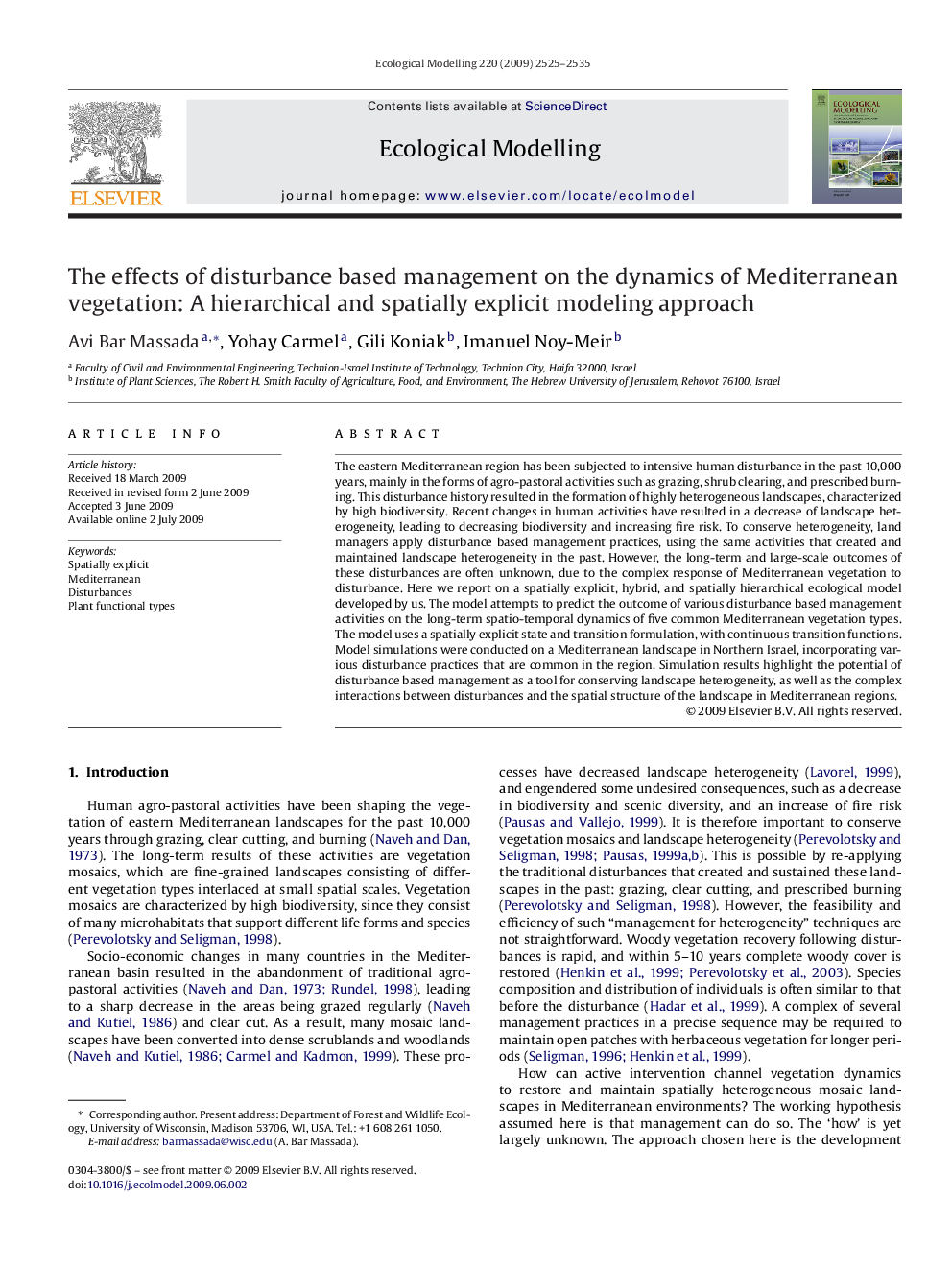| Article ID | Journal | Published Year | Pages | File Type |
|---|---|---|---|---|
| 4377669 | Ecological Modelling | 2009 | 11 Pages |
The eastern Mediterranean region has been subjected to intensive human disturbance in the past 10,000 years, mainly in the forms of agro-pastoral activities such as grazing, shrub clearing, and prescribed burning. This disturbance history resulted in the formation of highly heterogeneous landscapes, characterized by high biodiversity. Recent changes in human activities have resulted in a decrease of landscape heterogeneity, leading to decreasing biodiversity and increasing fire risk. To conserve heterogeneity, land managers apply disturbance based management practices, using the same activities that created and maintained landscape heterogeneity in the past. However, the long-term and large-scale outcomes of these disturbances are often unknown, due to the complex response of Mediterranean vegetation to disturbance. Here we report on a spatially explicit, hybrid, and spatially hierarchical ecological model developed by us. The model attempts to predict the outcome of various disturbance based management activities on the long-term spatio-temporal dynamics of five common Mediterranean vegetation types. The model uses a spatially explicit state and transition formulation, with continuous transition functions. Model simulations were conducted on a Mediterranean landscape in Northern Israel, incorporating various disturbance practices that are common in the region. Simulation results highlight the potential of disturbance based management as a tool for conserving landscape heterogeneity, as well as the complex interactions between disturbances and the spatial structure of the landscape in Mediterranean regions.
